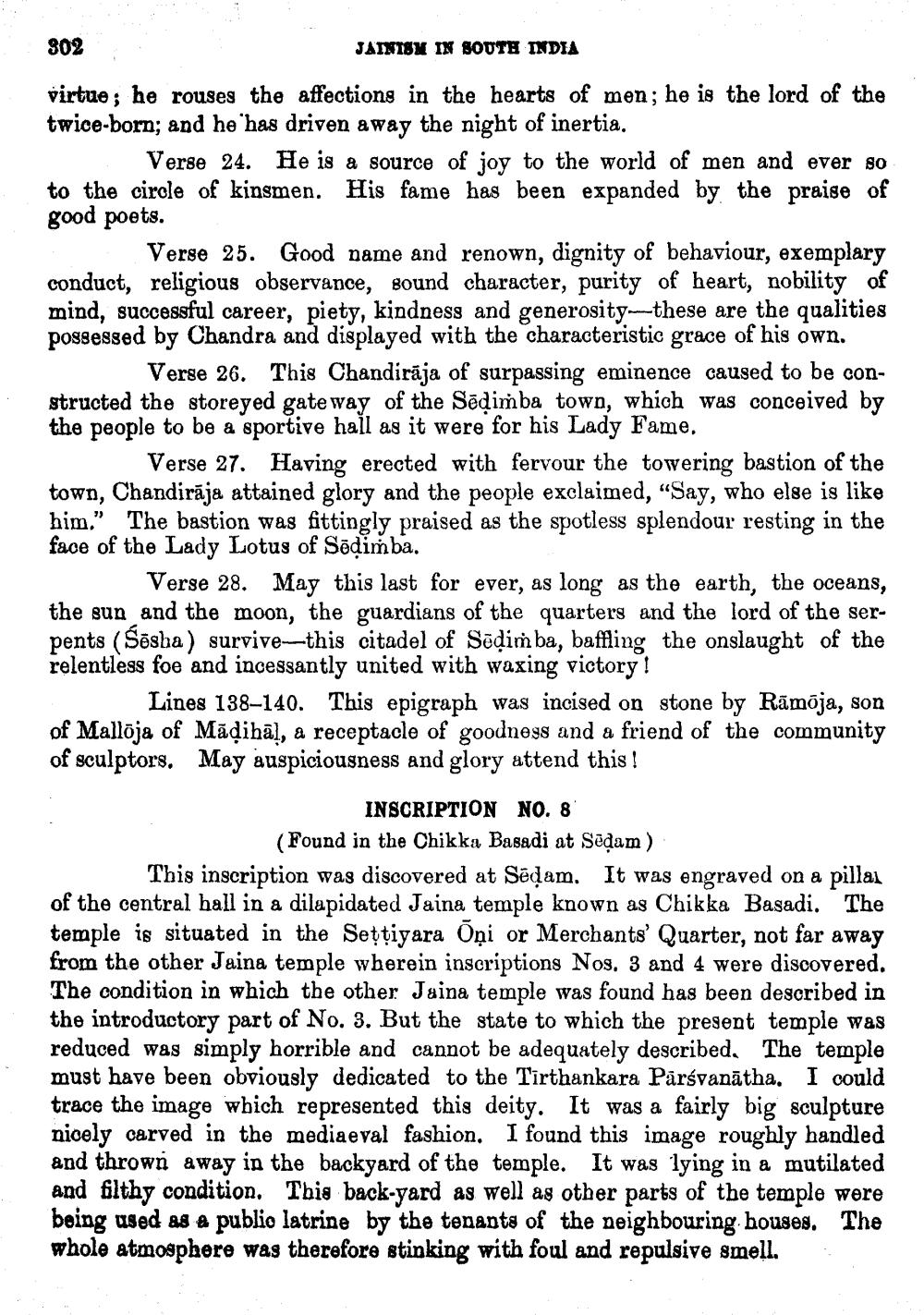________________
302
JAINISM IN SOUTH INDIA virtue ; he rouses the affections in the hearts of mon; he is the lord of the twice-born; and he has driven away the night of inertia.
Verse 24. He is a source of joy to the world of men and ever so to the circle of kinsmen. His fame has been expanded by the praise of good poets.
Verse 25. Good name and renown, dignity of behaviour, exemplary conduct, religious observance, Bound character, purity of heart, nobility of mind, successful career, piety, kindness and generosity--these are the qualities possessed by Chandra and displayed with the characteristic grace of his own.
Verse 26. This Chandirāja of surpassing eminence caused to be constructed the storeyed gate way of the Sēdimba town, which was conceived by the people to be a sportive hall as it were for his Lady Fame.
Verse 27. Having erected with fervour the towering bastion of the town, Chandirāja attained glory and the people exclaimed, “Say, who else is like him." The bastion was fittingly praised as the spotless splendour resting in the face of the Lady Lotus of Sēļiṁba.
Verse 28. May this last for ever, as long as the earth, the oceans, the sun and the moon, the guardians of the quarters and the lord of the serpents (Šēsha) survive--this citadel of Sēdimba, baffling the onslaught of the relentless foe and incessantly united with waxing victory!
Lines 138–140. This epigraph was incised on stone by Rāmāja, son of Malloja of Mādihā), a receptacle of goodness and a friend of the community of sculptors. May auspiciousness and glory attend this !
INSCRIPTION NO. 8
(Found in the Chikka Basadi at Söđam ) This inscription was discovered at Sēdam. It was engraved on a pillai of the central hall in a dilapidated Jaina temple known as Chikka Basadi. The temple is situated in the Settiyara Õņi or Merchants' Quarter, not far away from the other Jaina temple wherein inscriptions Nos. 3 and 4 were discovered. The condition in which the other Jaina temple was found has been described in the introductory part of No. 3. But the state to which the present temple was reduced was simply horrible and cannot be adequately described. The temple must have been obviously dedicated to the Tīrthankara Pārsvanātha. I could trace the image which represented this deity. It was a fairly big sculpture nicely carved in the mediaeval fashion. I found this image roughly handled and thrown away in the backyard of the temple. It was lying in a mutilated and filthy condition. This back-yard as well as other parts of the temple were being used as a publio latrine by the tenants of the neighbouring houses. The whole atmosphere was therefore stinking with foul and repulsive smell.




